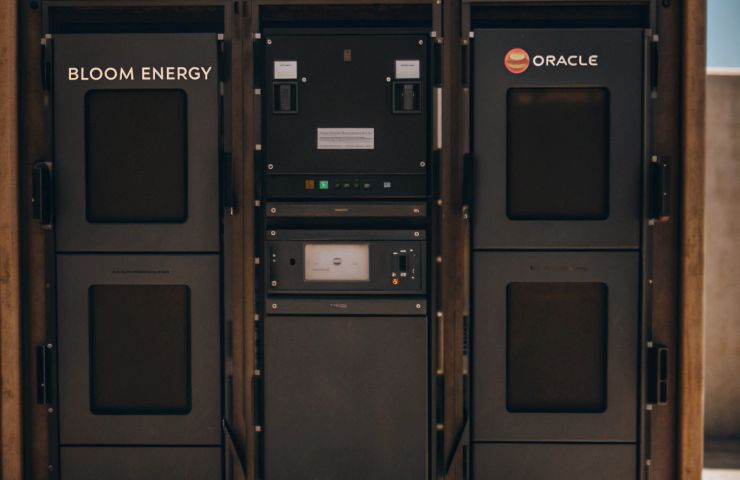
Bloom Energy’s Strategic Shift into AI and Hydrogen Reinforces Fuel Cell Leadership
August 1, 2025Bloom Energy Corporation is hitting its stride and signaling it’s just getting started. The company’s sticking to its guns with a 2025 revenue target between $1.65 and $1.85 billion, and so far, the numbers back it up. After pulling in $326 million in Q1 and $401.2 million in Q2, it’s clear Bloom’s clean power tech is catching serious momentum.
Powering the Digital World: Fuel Cells and Data Centers
One of the biggest moves this year? Bloom’s entry into AI-driven energy optimization, thanks to a bold new strategic partnership with Oracle. It’s a smart play—data centers are hungry for reliable energy, and they’re struggling to keep up with booming demand, especially in energy-stressed areas like California. With cloud computing and AI workloads on the rise, these facilities need power that’s fast, resilient, and local—and that’s exactly where Bloom’s solid oxide fuel cells (SOFCs) shine.
The company’s modular Energy Server not only minimizes emissions but also operates independently from the grid. That’s a big deal when uptime is non-negotiable. And now, with AI in the mix, Bloom’s boosting performance and pushing efficiency even further in high-demand tech environments.
Inside the Tech
- SOFC Technology: These systems turn fuels like natural gas, biogas, or hydrogen directly into clean electricity using high-temperature ceramic tech. They’re known for high efficiency, ultra-low emissions, and grid independence.
- Electrolyzers: Based on the same solid oxide tech, these units use renewable energy to split water and produce green hydrogen. That puts Bloom right at the heart of the growing hydrogen production movement.
- AI Integration: Real-time smarts that optimize energy use and distribution—especially useful where uptime is critical and costs need to stay under control.
What’s Moving the Needle
- Revenue climbed 19.5% year-over-year in Q2, and margins are trending up.
- The Oracle deal is a major gateway into the enterprise IT space.
- Bloom is shifting focus to high-margin opportunities and pulling back from older, capital-heavy setups.
- The company’s electrolyzer initiative is expanding its reach into the fast-growing green hydrogen market.
Why This Matters
Bloom’s rise isn’t just good news for its own bottom line—it’s sending a loud message across the clean tech world. Traditional power players using fossil fuels are feeling the heat, and investors are paying attention. With proven performance and real revenue growth, Bloom is making fuel cell technology look a lot more bankable than it used to.
That said, it’s not all smooth sailing. While analysts generally have a buy outlook for 2025, there are still a few concerns around the company’s financial strength—things like insider stock sales and a so-so Altman Z-score are being watched closely. But with bigger deals, improving cash flow, and a robust project pipeline, Bloom looks like it’s building serious staying power.
The Bigger Picture
What Bloom is doing goes way beyond quarterly performance—it’s showing what’s possible when next-gen fuel cell companies take on the twin challenges of decarbonization and digital infrastructure. With AI, fuel-flexible systems, and a foothold in green hydrogen, Bloom isn’t just keeping up with the energy transition—they’re out in front helping shape what comes next.



 With over 15 years of reporting hydrogen news, we are your premier source for the latest updates and insights in hydrogen and renewable energy.
With over 15 years of reporting hydrogen news, we are your premier source for the latest updates and insights in hydrogen and renewable energy.